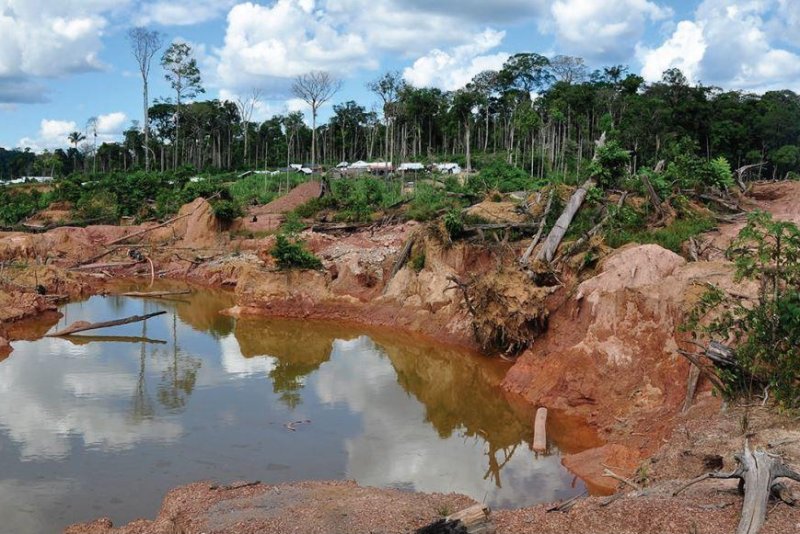1 of 2 | A gold mine in the Amazon rainforest is one example of environmental destruction that could result in collapse of the ecosystem by 2064. Photo courtesy of Robert Walker/University of Florida
ORLANDO, Fla., Dec. 29 (UPI) -- The world's largest rainforest ecosystem, the Amazon, will collapse and largely become a dry, scrubby plain by 2064 because of climate change and deforestation, a University of Florida professor predicts.
That forecast, published online in the journal Environment, gives the most specific date yet for the general demise of the Brazilian ecosystem, according to scientists familiar with Amazonian research.
The article, Collision Course: Development Pushes Amazonia Toward Its Tipping Point, was written by Robert Walker, a professor on the faculty of the university's Center for Latin American Studies, who describes himself as a land change scientist.
"The best way to think of the forest ecosystem is that it's a pump," Walker told UPI. "The forest recycles moisture, which supports regional rainfall. If you continue to destroy the forest, the rainfall amount drops ... and eventually, you wreck the pump."
Walker said he's spent a lot of time in the Amazon region talking to farmers and loggers who live there. He said poverty and poor use of government resources ultimately drives much of the deforestation.
"The people there, they don't worry so much about biodiversity, the environment, when they have to worry about eating their next meal," he said.
The rainforest can recover from periodic drought if those dry spells come years apart, according to Walker's article. But a severe drought in 2005 began a period of more frequent and longer drought periods.
The Amazon covers about 2.7 million square miles, a little less than the lower 48 U.S. states. But it has shrunk by about 20 percent since intense development began, Walker noted.
"If southern Amazonia's dry season continues lengthening as it has over the past few decades, the drought of 2005 will become the region's new normal before the end of the century," Walker wrote.
Such longer periods of drought are due not only to deforestation, but to global warming and climate change, Walker said.
That global impact means local actions won't be enough to save the Amazon, which stores large amounts of carbon from carbon dioxide -- a major contributor to climate change. The dry season has lengthened in the south by an additional 6.5 days per decade, Walker wrote.
The U.S. National Oceanic and Atmospheric Administration has noted Increasing fire activity in the Brazilian rainforest, as seen by satellites.
The "rainforest has experienced three major droughts, considered once-in-a-century events in 2005, 2010, and in 2015-2016," the agency said in a 2019 update.
Environmental advocacy in Brazil and around the world was strong in the 1980s and 1990s, Walker said, but it has collapsed since then.
His article takes aim at Brazil's conservative president, Jair Bolsonaro.
"The upshot is that the deforestation rate has begun to rise, if slowly, after reaching its historic low point in 2012," Walker wrote, noting that Bolsonaro's administration "appears intent on scrapping all remaining restraints on the unfettered exploitation of Amazonia's natural resources."
The unique characteristic about the article is the specific predicted date for the Amazon's demise, said another Amazon researcher, Nathan Moore, associate professor of geology at Michigan State University.
"The new thing ... here is saying that we can see the edge," Moore said. "[Walker] offers the first estimate, the year 2064, as when we will certainly have seen cataclysmic die-back."
Moore noted that other researchers have only given estimates in broad terms.
"Everyone wants to just wave their hands and say 'later in the century' or something. So Walker is making a real commitment here," Moore said.
Large areas of the forest will become grassland and will not return to a rainforest state, he said.
"All of the huge benefits of this massive forest will be gone, too -- abundant water and timber, food, new medicines," Moore said.















